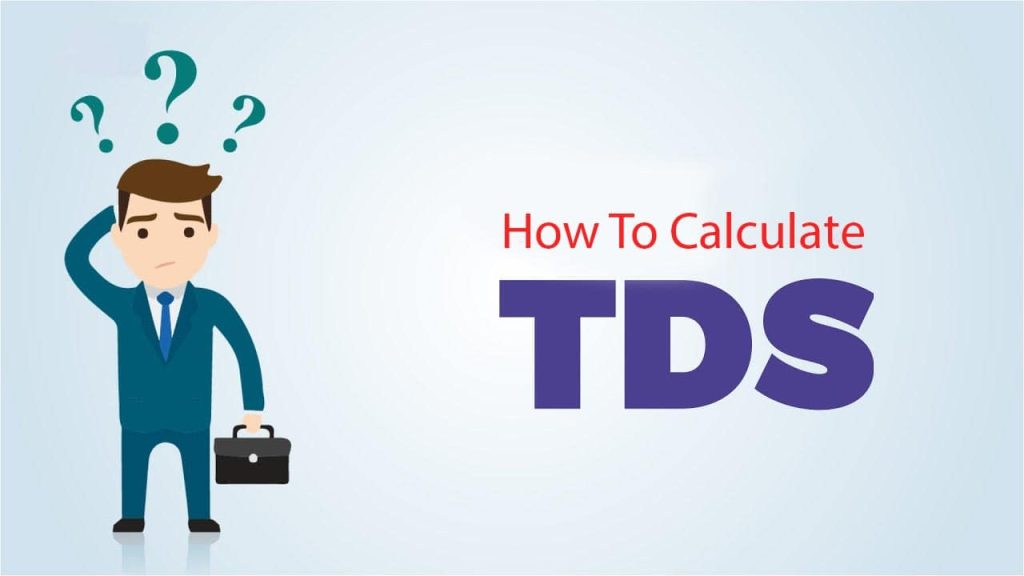Calculate TDS on salary – The notion of TDS has been formed with the intention of collecting tax from the very source of income. According to TDS, an individual (deductor) who is responsible to create a payment of a given nature to any individual (deductee) must therefore subtract tax at source and remit it to the Central Government. The deductee whose income tax was deducted at source will be allowed to obtain a credit of the amount so subtracted mostly on grounds of the form 26AS or the TDS certificate issued by the deductor.
So, How do I calculate TDS on salary?
Whereas the basic salary is completely taxable on the basis of the various tax bracket, a few other exemptions are accessible for payments made as allowances and benefits. You could even determine the TDS on your income by following the instructions below.

Step 1 – Determine gross monthly income as a total amount of your income, allowances and expenses.
Step 2 – Determine the exemptions accessible under Section 10 of the Income Tax Act (ITA). Exemptions shall apply to allowances like medical, HRA, travel.
Step 3 – Subtract the exemptions provided for in step (2) for gross monthly income defined in step (1).
Step 4 As the TDS is computed on the annual income, multiply the above figure by 12. This is your taxable annual salary income
Step 5 If you possess any other source of revenue, like rental income or losses, from suffered paying interest in housing loans, add or subtract this amount from the figure (4).
Step 6 After that, determine your investment during the year covered by Chapter VI-A of the ITA and subtract this number from the gross income computed in step (5). Examples of this would be the exclusion of up to Rs.1.5 lakh under Section 80C, that also involves investment possibilities like PPF, life insurance premiums, mutual funds, home loan repayment, ELSS, NSC, Sukanya Samriddhi account and so forth.
Step 7 Now lessen the total permissible income tax exemption on a salary. Presently,
- Income up to Rs.2.5 lakhs is completely exempt
- Income from Rs.2.5 lakhs to Rs.5 lakhs is taxed at 10%
- income from Rs.5 lakhs to Rs.10 lakhs is taxed at 20%
- All income beyond this amount is taxed at 30%
Please keep in mind that elderly people have different tax slabs and are granted higher exemptions than any of those mentioned above.
Read – Which ITR to File
Calculating TDS on salary with an example
Step 1 & 2
Assume your gross annual income is Rs.984,000 so the monthly salary will be Rs.82,000. This figure may include sections as-basic pay Rs.52,000, HRA Rs.19000, travel allowance Rs.1800, medical allowance Rs.1,000, child education allowance (CEA) Rs.450 and other allowances making the total of11,750.
Step 3 & 4
Supposing you remained around your own property, your monthly allowance exemption is equal to Rs.3.250 (medical + travel + CEA). Thus, your annual taxable amount is (Rs.82,000-Rs.3,250)*12, which is Rs.9,45,000.
Step 5
Let’s say you’ve just suffered a loss of Rs.1.6 lakhs on home loan interest payments during the year. By decreasing this exempt amount from taxable income, your taxable income will become Rs.7.85,000.
Step 6
Assume you have invested Rs.1.1 lakhs in different categories falling under Section 80C exemptions as well as managed to make another Rs.50,000 investment in sections falling under Section 80D. Thus, the resulting Rs.1.6 lakhs is exempt from taxes under Chapter VI-A. By subtracting this number from the gross taxable income computed above, your taxable income has become Rs.6.25,000.
Step 7
Calculating your tax slab
Your final tax break as per the income slabs specified by the IT dept is as follows:
The final TDS to be subtracted from your annual income will be – Rs.25,000 + Rs.25,000, which is Rs.50,000 for current year income, or Rs.4,166 per month for current year income.
| Income Tax Slab | TDS Deductions | Tax Payable |
| Up to Rs.2.5 lakhs | Nil | Nil |
| Rs.2.5 lakhs to Rs.5 lakhs | 10% of ( Rs . 5,00,00 – Rs.2,50,00) | Rs.25,000 |
| Rs.5 lakhs to Rs.6.33 lakhs | 20% of (Rs. 6,25,00 – Rs.5,00,00) | Rs.25,000 |



